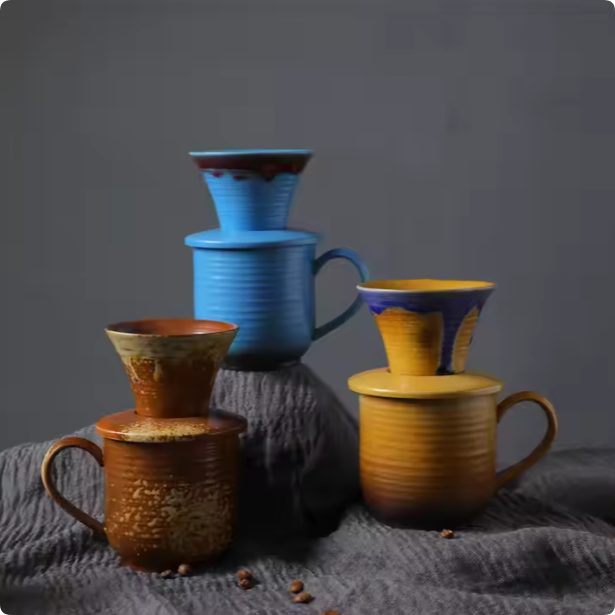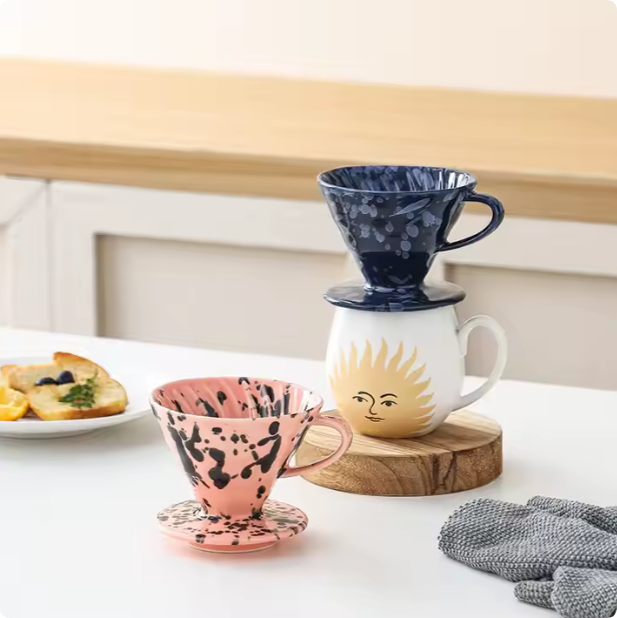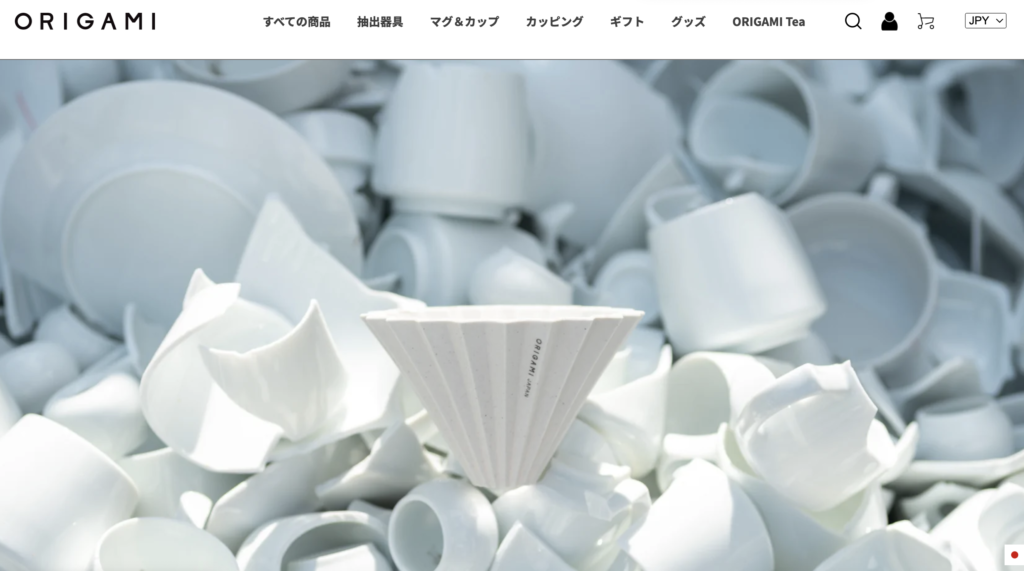For true coffee lovers, brewing is more than a routine—it’s a lifestyle. Among the many coffee brewing tools, ceramic coffee drippers stand out for their elegant look and consistent performance, making them a favorite for coffee aficionados around the world.

This in-depth blog will walk you through why ceramic drippers are worth the hype, compare them with other materials, help you choose the right type, and—what makes this post extra special—we’ve included a step-by-step explanation of how ceramic drippers are made. It’s everything you want to know in one place.
✅ Why Ceramic Coffee Drippers Win Hearts
What makes people choose ceramic over plastic, metal, or glass?
- Excellent heat retention: Ceramic maintains water temperature during brewing, helping achieve better extraction.
- Neutral taste: Ceramic won’t absorb odors or alter the taste of your coffee.
- Aesthetically pleasing: Available in a wide range of glazes and finishes—form meets function.
- Easy to clean and maintain: Doesn’t trap coffee oils or odors, perfect for everyday use.
🆚 Ceramic vs. Plastic vs. Metal Coffee Drippers (Comparison Table)
| Feature | Ceramic Dripper | Plastic Dripper | Metal Dripper |
|---|---|---|---|
| Heat Retention | 🌡️ Excellent | 🌡️ Poor | 🌡️ Moderate |
| Taste Preservation | ☕ Pure flavor, no interference | ☕ Can retain odors | ☕ Might introduce slight metallic taste |
| Durability | ⏳ Long-lasting with care | ⏳ Very long, may deform over time | ⏳ Long, prone to scratches |
| Aesthetic Appeal | 🎨 High—glazed, colorful, elegant | 🎨 Low—mostly functional | 🎨 Minimalist, industrial look |
| Eco-friendliness | 🌱 Reusable, low waste | 🌱 Poor—plastic waste | 🌱 Medium—recyclable but high carbon footprint |
🔧 How Ceramic Coffee Drippers Are Made — Step-by-Step
Unlike mass-produced industrial items, ceramic drippers are crafted through careful processes that blend traditional craftsmanship with high-temperature technology. Here’s a look behind the scenes at how they go from clay to cup.

1. Clay Selection & Preparation
- High-quality raw materials like kaolin and porcelain clay are selected.
- The clay is filtered, kneaded, and de-aired to ensure fine, smooth texture.
2. Molding: Slip Casting or Hand Throwing
- Slip casting (using molds) allows high consistency and is ideal for bulk OEM production.
- Hand throwing is more artistic and used for designer or artisanal products.
3. Trimming & Drying
- Each formed dripper is trimmed and refined to ensure clean lines and flow grooves.
- Pieces are air-dried or low-temp dried to prevent cracking during firing.
4. Bisque Firing (First Firing)
- Fired at 800–1000°C to harden the shape and remove residual moisture.
5. Glazing
- Glazes can range from glossy and matte to crackle or speckled finishes.
- Dipping, brushing, or spraying techniques are used to achieve desired effects.
6. Glaze Firing (Second Firing)
- High-fired at ~1250°C to vitrify the body and glaze into a durable, food-safe surface.
7. Inspection & Packaging
- Each piece is carefully inspected for flaws, pinholes, warping, or cracks.
- Custom packaging, logos, and branding are added according to client specifications.
This careful process ensures each dripper is not only functional but also a work of art—practical, durable, and uniquely beautiful.
🌏 Top 5 Ceramic Coffee Dripper Brands from Japan
1. Hario
- Signature Product: V60 Ceramic Dripper
- Known for: Spiral ribs, fast flow rate, precise control, beloved by baristas worldwide.
2. Kalita
- Signature Product: Wave Ceramic Dripper

- Known for: Flat-bottom design with three small holes, consistent extraction, beginner-friendly.
3. Origami Japan
- Signature Product: Origami Dripper

- Known for: Vibrant colors, petal-like grooves, works with both cone and wave filters.
4. Kinto
- Signature Product: Slow Coffee Style
- Known for: Minimalist Japanese design, encourages a slower, mindful brewing experience.
5. Hasami Porcelain
- Signature Product: Hasami Dripper
- Known for: Traditional Hasami ware, stackable form, natural and rustic aesthetics.
🎁 Why Ceramic Coffee Drippers Make Great Gifts
- Perfect for branded promotional gifts or kitchenware sets
- Highly customizable—logos, colors, and packaging options available
- Ideal for coffee gift boxes, housewarming presents, wedding favors, or holiday bundles
👀 How to Choose the Right Ceramic Dripper for You
- Love color and control? Go for Origami or Hario.
- Want stability and ease? Kalita Wave is your best friend.
- Prefer Japanese minimalism? Kinto or Hasami will charm you.
- Need versatility? Choose a model compatible with various filter shapes.
🙋♀️ Frequently Asked Questions (FAQ)
Q1: Are ceramic drippers fragile?
Not really. While they can break if dropped, they’re highly durable in everyday use with proper care.
Q2: Are ceramic drippers suitable for beginners?
Yes! Especially models like the Kalita Wave or Origami, which are designed to make the process easier.
Q3: Can I customize ceramic coffee drippers?
Absolutely. Through OEM/ODM services, you can customize color, logo, packaging, and even the shape.
Q4: How do ceramic drippers compare to glass?
Ceramic retains heat better, is more durable, and offers a wider range of surface finishes.
Q5: What filters do I need?
That depends on the dripper style. Most ceramic drippers work with either cone-shaped or wave-style paper filters.
🏁 Final Thoughts: A Coffee Ritual Worth Investing In
A ceramic coffee dripper isn’t just a tool—it’s part of a daily ritual. With their balance of function and beauty, they’ve earned their place in homes, cafes, and gift boxes around the world.
If you’re a homeware buyer, gift merchant, or cross-border eCommerce brand looking to develop your own ceramic coffee products, China-based factory EKA offers OEM and ODM services tailored for the global kitchenware and home goods market. Whether you’re building a private label dripper line or designing artisanal gift sets, EKA brings craftsmanship and customization together in every piece.

